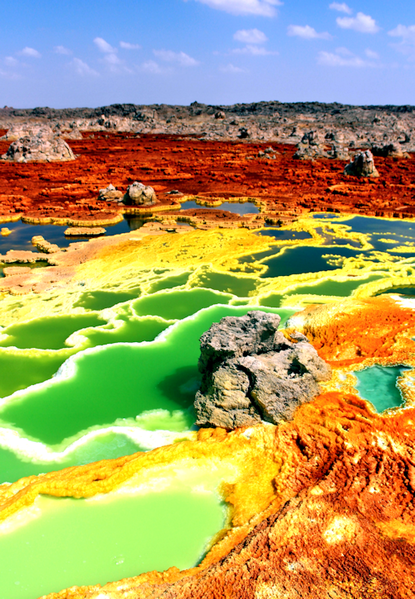# Exploring the Possibility of a Shadow Biosphere on Earth
Written on
Chapter 1: The Concept of a Shadow Biosphere
The idea of life on Earth being derived from a common ancestor is well-established; however, could there be undiscovered forms of life that are entirely different from what we recognize?

Charles Darwin speculated that all living beings on Earth descended from a singular primordial form, as noted in his seminal work, "On the Origin of Species." Today, as we examine the biosphere in greater detail, we continue to uncover significant similarities that indicate a shared lineage among the organisms we have studied thus far.
All known life utilizes nucleic acids as carriers of genetic information—primarily DNA, with RNA serving this role in certain viruses. This genetic information is transcribed and translated into proteins using a common cellular machinery, and the amino acids that construct these proteins are dictated by a universal genetic code. Moreover, ATP serves as a universal energy source across the vast tapestry of life. Thus, it appears we are all distant relatives.
But is there a possibility of 'other' life forms existing? Could there be entities that are outside this familial connection?
Let’s delve into the notion of the shadow biosphere—a proposed domain of life that is fundamentally distinct from any we currently understand.
There’s a chance that life could arise independently, employing an alternative biochemistry unlike anything we have encountered. The shared biochemistry of known life forms may not be the sole pathway. After all, while the genetic code and molecular structures we recognize are effective, we can’t definitively conclude they represent the only possibilities (given that our sample size is just one).
Moreover, the rapid emergence of simple life on Earth after it became habitable suggests that abiogenesis—the transition from non-life to life—might not have been an exceedingly difficult process (again, with a caveat on our limited sample size). There’s ample time for independent life forms to develop.
But where might we find this elusive shadow biosphere?
Section 1.1: Extreme Environments
Even among organisms we are familiar with, some microbes thrive in extreme conditions. These extremophiles have specific preferences for their habitats, from high-pressure hot water exceeding 100°C to the depths of the Mariana Trench and even nuclear waste.

Yet, there are regions on Earth where no known life exists, where our collective biochemical systems may falter. The Atacama Desert in Chile, characterized by its extremely dry and acidic soil, and the Dallol geothermal field in Ethiopia, which is exceedingly hot, salty, and acidic, are examples of such unwelcoming environments.
Could it be that a radically different life form is lurking in these harsh locales?
Section 1.2: Co-existing Neighbors
Another hypothesis is that the shadow biosphere might exist in harmony with us. Perhaps it shares similar environmental conditions but is so minuscule in number that it has eluded detection.
It’s conceivable that multiple early life lineages coexisted at one point. The lineage leading to modern humans may have been more adept at survival and reproduction, overshadowing others that didn’t fully vanish. A sample of soil from your backyard might harbor microbes yet unknown to science. Who's to say something bizarre isn't hiding in plain sight?